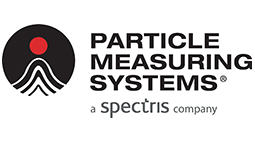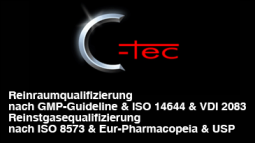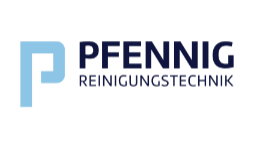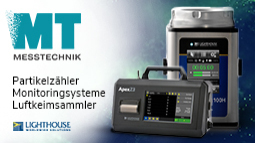Singular possibilities
Vanessa Wood belongs to those scientists, whom one calls gladly �over flier�: Yale Absolventin with 22, Doktorin with 26, Professorin with 27 years. In the interview the sympathetic nano- Forscherin tells, what lured her of WITH (the Massachusetts Institute of Technology) to the ETH - where she works today among other things in the new �Binnig and Rohrer Nanotechnology center�. Author: Christine heath man woman Wood, how you have of the fact experience that the ETH looks for a Professorin for Nanophotonik and nano-electronics? In February 2010 I got a call of the ETH. The ETH looked for a representative from my specialist area and had heard that I apply as Professorin. Thus they asked me to submit my application documents and I had done that. What gave the excursion for your decision in favor of Zurich? I was extremely impressive by resources here the available and the other scientists, which I became acquainted with here with my visit. There clearly a strong cooperative spirit and much enthusiasm for the research were to be felt. With resources you mean above all the new nano-research center in R�schlikon, which operates the ETH Zurich together with IBM. My team and I are in the happy situation to have two state of research places: the opto-electronic laboratory in the ETH center and the energy store laboratory in the �Binnig and Rohrer Nanotechnology center�. In this center there is a pure area, which is used together of the ETH and IBM. It is appropriate particularly to introduce new materials and procedures to the standard manufacturing. Such a mechanism is substantial, in order to make the scientific and industrial potential of the nanotechnology usable. In most pure areas one may not at all work with nano-materials to research purposes. To that extent does the �Binnig and Rohrer Nanotechnology center� an important gap close and does set at it new Massst�be.An which exactly works you in the two laboratories? We examine the charge transfer in nano-potash towards systems and use the realizations won thereby for example for the construction of solar cells, accumulators and light emitting diodes. For example we concentrate on new methods for the characterisation of Akkumaterialien and for the conception of new Akkuarchitekturen. If one makes the active mass smaller of Akkus, the relationship from surface to volumes increases. Thus one reaches higher charge and discharge currents, which could be interesting for applications in electric vehicles. Over which orders of magnitude we talk with the nano-materials, which use you? We talk of an order of magnitude, which is smaller 80.000-mal than the diameter of a human hair. In our laboratories we are interested in materials with dimensions of under 50 nanometers. Underneath this threshold materials behave completely differently than larger particles of the same material ability you an example of it give? If you take for example a few large pieces of an optically active semiconductor material, then each piece will absorb the same color of light. If you make particles in an order of magnitude however of the same semiconductor material from two to ten nanometers of diameters, of everyone such particle different colored light is absorbed, since the electronic structure of the material was changed. These nano-particles, which we call points of quantum, are extremely interesting for applications in solar cells and in the lighting system. Such points of quantum possess unusual optical characteristics, by its small size of however the charge transfer are made more difficult. One of our research projects at the laboratory for nano-electronics wants means and ways to find, in order to be able to use the favorable optical characteristics of these materials, without being subjected the restrictions of the bad charge transfer. Thereby is co-operation with the researchers of IBM how important? The studying of the ETH, which work in the pure area of the �Binnig and Rohrer Nanotechnology center�, have the singular opportunity, the there premises to divide Ger�tschaften and knowledge resources with IBM scientists who are prominent in nano-technology research and development. Our interaction with IBM researchers is substantially promoted by the spatial and mental proximity in the center, and so we are pleased on developing with the IBM colleagues a still more extensive co-operation. Many humans have fear before the fact that nano-particles could arrive uncontrolled into the environment. What do you say to those? As the first one must make oneself clear that by nanotechnology completely different things are to be understood: Some groups of researchers would like to use nano-particles in the health range. Our laboratory does not work however on biological applications. Our nano-particles are encased in devices, so that they do not come with the human body or the environment into contact. All laboratories are equipped nevertheless with us with special and venting systems and order over special chemical disposal procedures, in order to isolate the nano-particles. We are the opinion that one should meet all precautionary measures, in order to ensure the security of the researchers and avoid any environmental effects. How does it stand with the responsibility of the scientists themselves? Altogether I believe that we have the ethical obligation to consider also the effects of the production as scientists and engineers and disposal of the materials and products developed by us. That is valid however for each technology, not only for nano-materials. A first step exists in the study of the risks. In Switzerland we are in the happy situation to lead across the national research program �chances and risks of nano-materials� at the same time a positive dialogue across security and invest into security. When will the first nano-solar cells come on the market? The interest on the part of the economy is at present very large; therefore I count in a few years on the first products. However it will take in my opinion still some years, until the use of nano-materials in solar cells really developed. Nano-materials improve not presently/immediately the technology. Rather we must understand, how and when we can use them most effectively. But straight these open questions to the nano-materials, for example, how we can use their new characteristics best, it is the reason, why it is so exciting, in this research range to be active. Vanessa Woodist since January 2011 at the section for information technology and electro-technology of the ETH Zurich actively. There it leads the laboratory for nano-electronics. Before it held as Forscherin a Postdoc place under the direction of professor Yet Ming Chiang and professor Craig Carter in the department for materials technology and - technology at the Massachusetts Institute of Technology (WITH), where it examined nano-structured colloid suspensions for applications of energy stores. Vanessa Wood acquired a master OF Science and attained a doctorate in the department for electro-technology and computer science of with. There it researched at colloidal nano-crystals and examined their employment in opto-electronic devices such as light emitting diodes and solar cells.�
This text was translated automatically.
ETH Zürich
8093 Zürich
Switzerland








